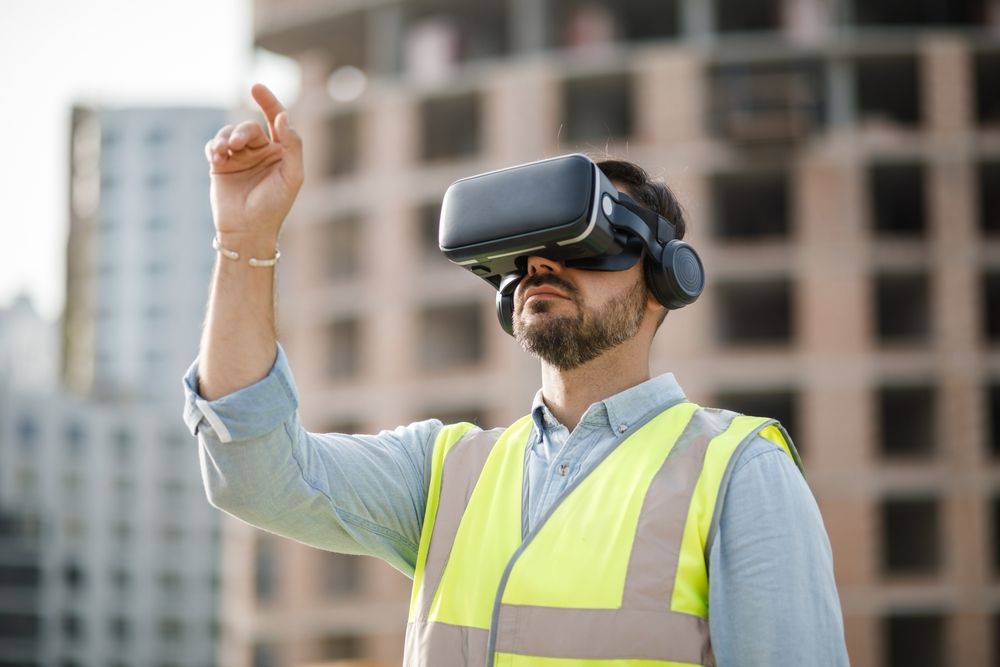How Technology Is Making Construction Safer

From running safety drills to wearing the right safety gear, various measures have been put in place to ensure the safety of construction workers. However, the construction industry still ranks as one of the most dangerous industries for workers. Companies are constantly looking for ways to solve safety problems for construction workers, and most of them are turning to technology for new safety solutions.
From wearable devices and drones to fleet dash cam, many new technologies can help improve the safety levels in the construction industry. Investing in these technologies can save you tons of money from injuries and downtime caused by accidents. In this article, we’ll look at the top ways technology is making the construction sector a safer place to work:
1. Digitalize Safety Processes
In the past, company safety processes were typically paper-based and manual, meaning someone needed to physically monitor and document operations to prevent mishaps. Improving safety on-site can be incredibly difficult without critical insights into safety performance. These programs also don’t provide real-time notifications of potentially unsafe or risky conditions before accidents happen.
Today, the digitalization of processes has made construction safety simpler and achievable. Mobile applications enable remote monitoring, allowing you to manage construction and ensure worker safety without being physically present at the site. Workers also have everything they need to perform tasks correctly, such as safety permits, checklists, plans, schedules, and instructions.
Mobile apps eliminate the need to carry a stack of papers, so workers can complete reports and other documents through mobile phones in real-time. As a result, this reduces the chance of making mistakes that could cause injuries. You also can digitally share any gathered information with the management and other workers for real-time detection of conflicts in operations.
2. Construction Wearables for Worker Safety
Wearables are transforming the construction industry by eliminating fatalities and injuries on site. These wearables include smartwatches that monitor vital signs in real-time, such as the heart rate, respiration rate, and skin temperature. They can also include smart clothing such as a hard hat and safety vest designed with sensors, real-time locating systems, and GPS tech.
Data collected from these wearables can be accessed through a mobile application in real-time, helping you keep a watchful eye on the workers at the site. These devices can also help you track a worker’s movement, monitor their posture, and determine whether they are intoxicated or suffering from fatigue. These insights can help you spot a potential hazard before it occurs. Through sensors, you can detect dangerous toxins in the air like carbon monoxide and react quickly enough before it causes any serious harm to the workers.
GPS features on wearable devices play a crucial role in the immediate management of site crises. This can help you quickly locate victims of accidents and apply emergency procedures before the injuries get worse. This helps save many lives in a potentially fatal situation at the site.
3. Anticipate the Future With Data
Artificial intelligence (AI) is another powerful technology revolutionizing the construction sector. AI helps analyze vast amounts of past safety data in real-time to anticipate anything that may prove dangerous in construction sites. Using attributes like site conditions, construction project size, equipment in use, and worker experience, AI can help you predict the likelihood of a construction incident. With this insight, you can put the necessary preventative measures in place before the incident occurs, helping you improve the safety of the workers.
Paired with analytics and IOT, artificial intelligence can also make equipment use safer for workers. AI-enabled equipment collects massive amounts of data on safe usage, so you’re notified when malfunctions or incorrect settings are used. This can help save your costly construction equipment from damage and save the lives of those operating the machine. AI-supported cameras deliver real-time video and analyze all inbound data regarding the job site. The collected data gives you insights into the sites to anticipate any potential hazard, allowing you to make better decisions regarding employee safety.
4. Ensure Workplace Safety Using Drones
Drone technology is revolutionizing how inspections are done. Most inspections are done at great heights, putting the worker at risk. Drones make construction site inspections safer, since they can be performed remotely while the worker stays safely on the ground. That’s because drones can go extremely high and even navigate tight spots to give you high-quality aerial images and videos, helping you inspect your project’s progress and work quality.
Apart from inspecting the site for work quality, you can also use drones to survey large construction sites for risk factors to ensure safe work environments for the workers. For example, drones attached with sensors can detect and notify workers of gas leaks and other harmful chemicals on the site.
Drones are also being used to monitor workers while at work to ensure everyone is working and dressed safely. Combined with AI-powered 3D imaging software, drones can provide valuable insights to streamline transparency and enhance worksite safety. Some companies are even assessing the effectiveness of using drones to move equipment and tools across large construction sites. This will help construction staff work faster, reduce lifting, back injuries, and improve on-the-job safety.
5. Streamline On-Site Training
Many workplace injuries happen due to inexperience, especially for those new in the industry or because of complacency. That’s why workers need to have the right skills even before getting into the site. Technology can help streamline on-site safety training by providing a consistent and effective way to impart knowledge and increase awareness.
For instance, virtual and augmented reality devices can help you improve staff training by simulating hazards and deadly mistakes on the job site. This gives your workers an invaluable learning experience. Augmented reality facilitates more detailed training on heavy equipment on real sites with different virtual challenges. This equips all workers with the right skills to operate heavy equipment specific to their jobs without putting others at risk.
Endnote
Technology plays a crucial role in improving the safety of workers in the construction sector. As construction safety technology continues to improve, serious workplace injuries and accidents could soon be a thing of the past. For instance, you can now use a drone to conduct job site inspections instead of putting your worker at risk.
Besides improving worker safety, deploying technology can also increase worker productivity. Be sure to check your latest safety evaluation to help you strategically adopt and implement tech solutions that can ensure the safety of workers and improve efficiency of your construction business.

Ravindra Ambegaonkar
Ravindra, the Marketing Manager at NY Engineers, holds an MBA from Staffordshire University and has helped us grow as a leading MEP engineering firm in the USA
Join 15,000+ Fellow Architects and Contractors
Get expert engineering tips straight to your inbox. Subscribe to the NY Engineers Blog below.


